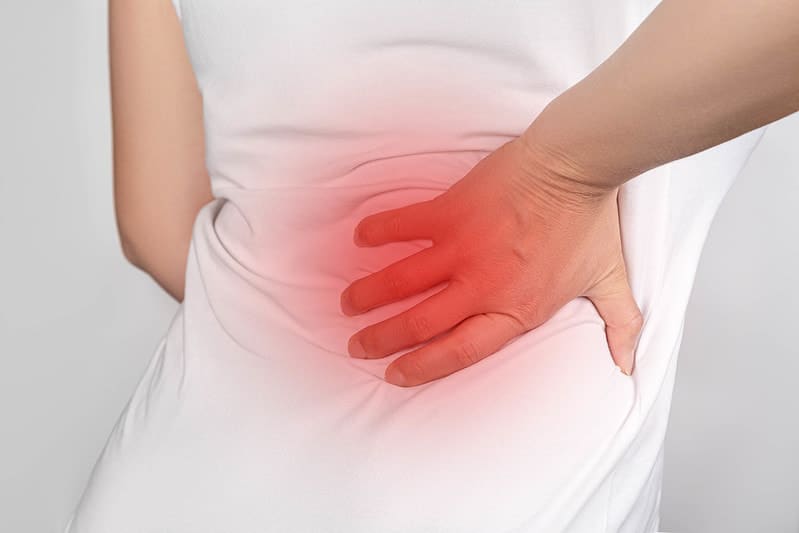The human spine consists of many bones, muscles, white and gray matter arranged in an organized manner. In fact, it’s so amazing that your backbone can carry nearly 2000 pounds without getting crushed!
While the bones protect the spinal cord, the white and gray matter bear 31 pairs of spinal nerves. If you look closely, the spine might look straight when observed from behind and slightly curved when seen from the side. This design allows it to absorb the effects of gravity and deal with all sudden shocks.
Just like other parts of our body, even the spine isn’t free of deformities and disorders. In fact, one in every three American adults is experiencing some or the other form of back pain. What’s even more startling is the stat that at least 80% of Americans will experience back issues in their lifetime.
Let’s look at how these issues are caused.
How Are They Caused?
We often hear complaints of back pain from people who indulge in sports and adventure. However, some more common reasons include incorrect sleeping positions, heavy lifting, and performing repetitive tasks.
These activities may lead to issues such as:
- Nerve roots that lead to arms and legs get irritated
- Small nerves that protrude out of the vertebrae get pinched
- Large back muscles get strained
- Injury to bones or ligaments that are in and around the spinal region
That isn’t an exhaustive list, but most problems related to the back can be associated with one of the above causes. So, how do we discover the difference between momentary back pain due to exertion and a severe spinal issue?
What Are the Types of Spine Disorders?
We have listed the most prevalent spine disorders, their symptoms, and ways to treat them in this section.
1. Kyphosis
It’s commonly called a hunchback or a flat back due to the excessive curvature of the spine. There are multiple types of kyphosis – some are easily correctable, while are others might require surgical intervention. The condition can easily be treated if detected and addressed during childhood.
The symptoms of Kyphosis include back stiffness, a visible curvature, and rounded shoulders.
Treatment Methods
Postural kyphosis can be corrected using physical therapy and by making conscious efforts to correct posture. Scheuermann’s kyphosis or post-traumatic kyphosis require surgery or a brace
2. Scoliosis
Of late, this notorious condition is wreaking havoc in the lives of American children. It occurs when the angle of sideways curvature is more than 10 degrees. This is determined using the Cobb angle calculation. Depending on the angle it is classified into mild, moderate, and severe.
Scoliosis is progressive. The curvature may increase steadily over the years if not treated in the early stages.
Treatment Methods
In recent times, scoliosis braces and chiropractic methods have gained traction among those with scoliosis. When there is rapid deterioration, you may require spinal fusion surgery along with a scoliosis brace for post-operative care
3. Disc Herniation
It’s called a hernia when an organ or a tissue in your body protrudes through a cavity. And as the name suggests, disc herniation occurs when the cushiony layer between the vertebrae pushes out.
Herniated lumbar disc is a popular term in the context of slipped discs. This is because the lumbar spine has more stress than any other part of the spine. There are other similar conditions like thoracic and cervical disc herniations.
Treatment Methods
Physical therapy and pain management sessions should be the first course of action. If the situation doesn’t improve, you might require an invasive procedure to remove the herniated portion.
4. Spondylolysis
There’s a tiny bone in your spine named ‘pars interarticularis.’ Spondylolysis is the condition that occurs when this bone experiences stress fractures.
It usually occurs in people who have a weak vertebra due to genes or repeated injuries. While the common symptoms include muscle strain and lower back pain, it often shows up in the body without symptoms.
Treatment Methods
An ample amount of rest and few physical therapy sessions do the trick most of the time. If the condition aggravates, you might require steroids and pain-relief medication.
5. Sciatica
The sciatic nerve passes through your lower back down to the legs. Sciatica mainly occurs as an allied condition of spinal stenosis and herniated disc.
Widely known symptoms of sciatica include troubles with bowel movement and chronic lower back pain.
Treatment Methods
Self-care treatments for sciatica include the application of an ice-pack on hips and gentle stretching. Doctors might also prescribe anti-inflammatory spinal injections and therapy.
6. Spinal Stenosis
Your vertebrae form a tunnel of sorts to house various nerves known as a spinal canal. When the tunnel narrows down, there’s undue pressure on the nerves and the spinal cord leading to stenosis.
Commons among older adults, spinal stenosis is caused by arthritis, spinal tumors, or injuries. The condition might start showing with signs like foot-drop, missing sensation, and leg cramps.
Treatment Methods
Acupuncture therapy, lumbosacral orthosis, and pain-relief medication help most people with stenosis. Bone removal or widening procedures can help patients if non-surgical treatments are ineffective.
Final Thoughts
If left unattended, spinal disorders may leave a dent in your life and livelihood.
Whether you have a desk job, are a homemaker, or an adventure sports enthusiast, back issues might not spare you. Take necessary precautions and get a doctor’s appointment if you’re experiencing any chronic pain.
Looking for a WCR brace to treat scoliosis? Reach out to an experienced orthotist at the nearest Align Clinic.




